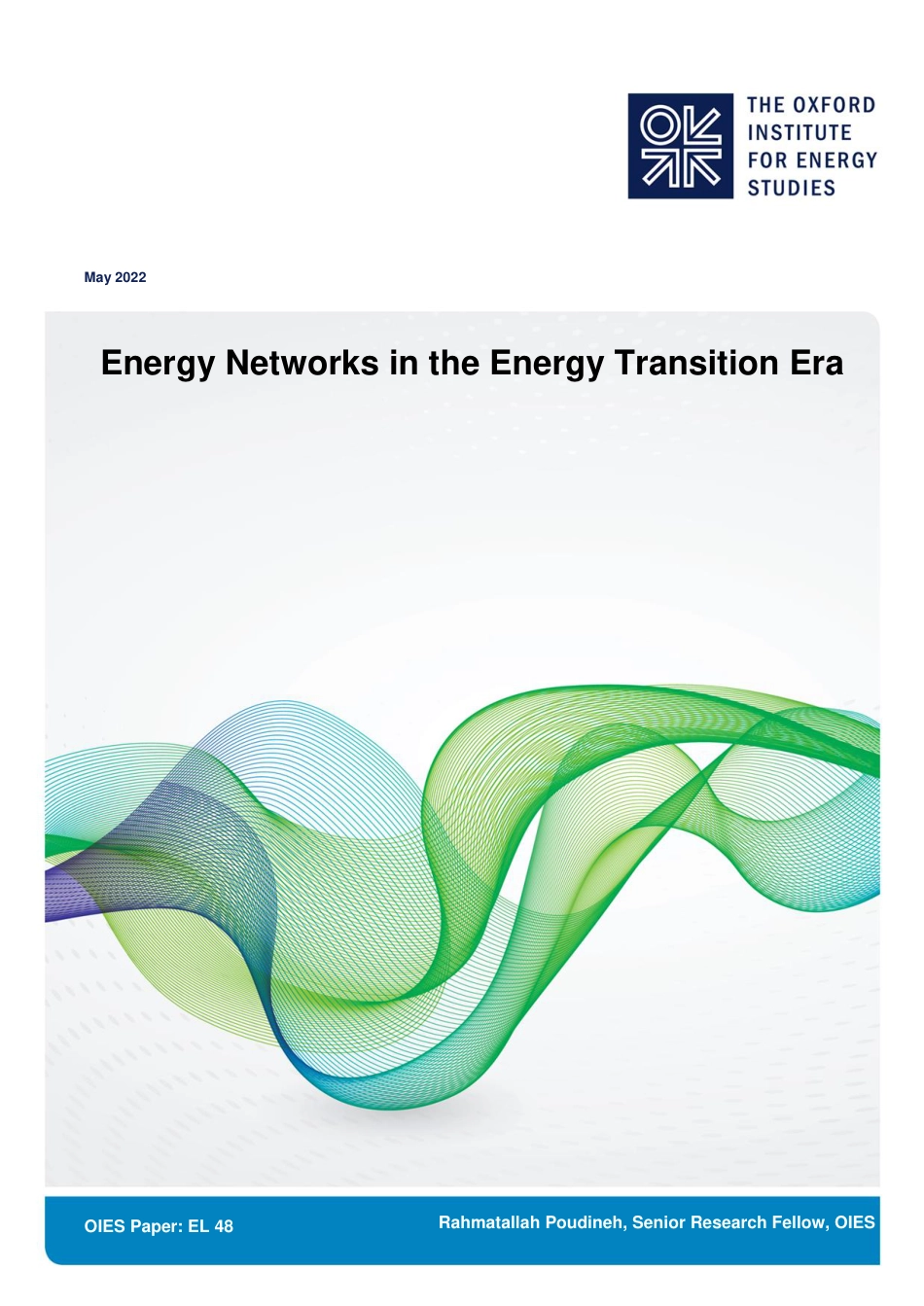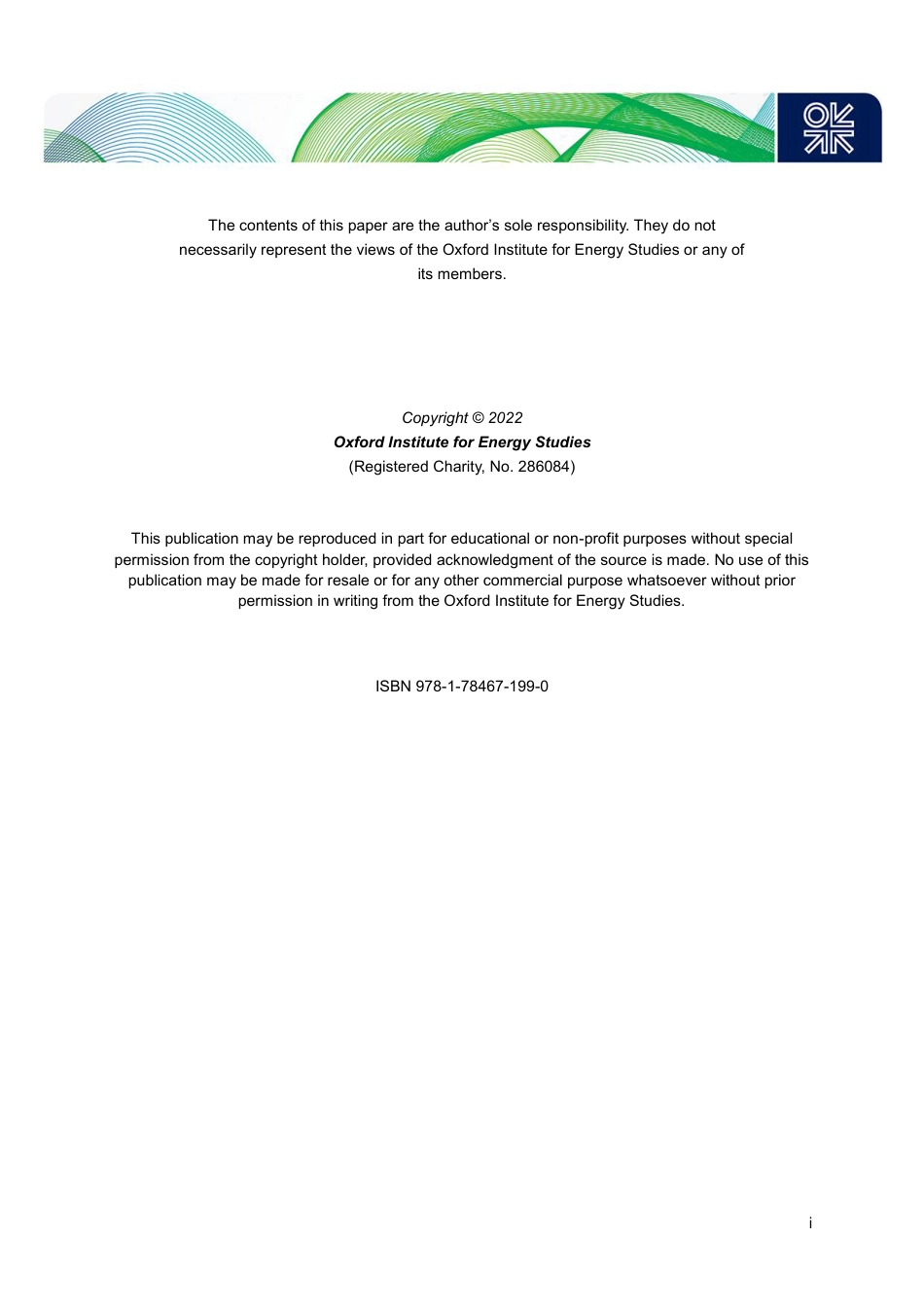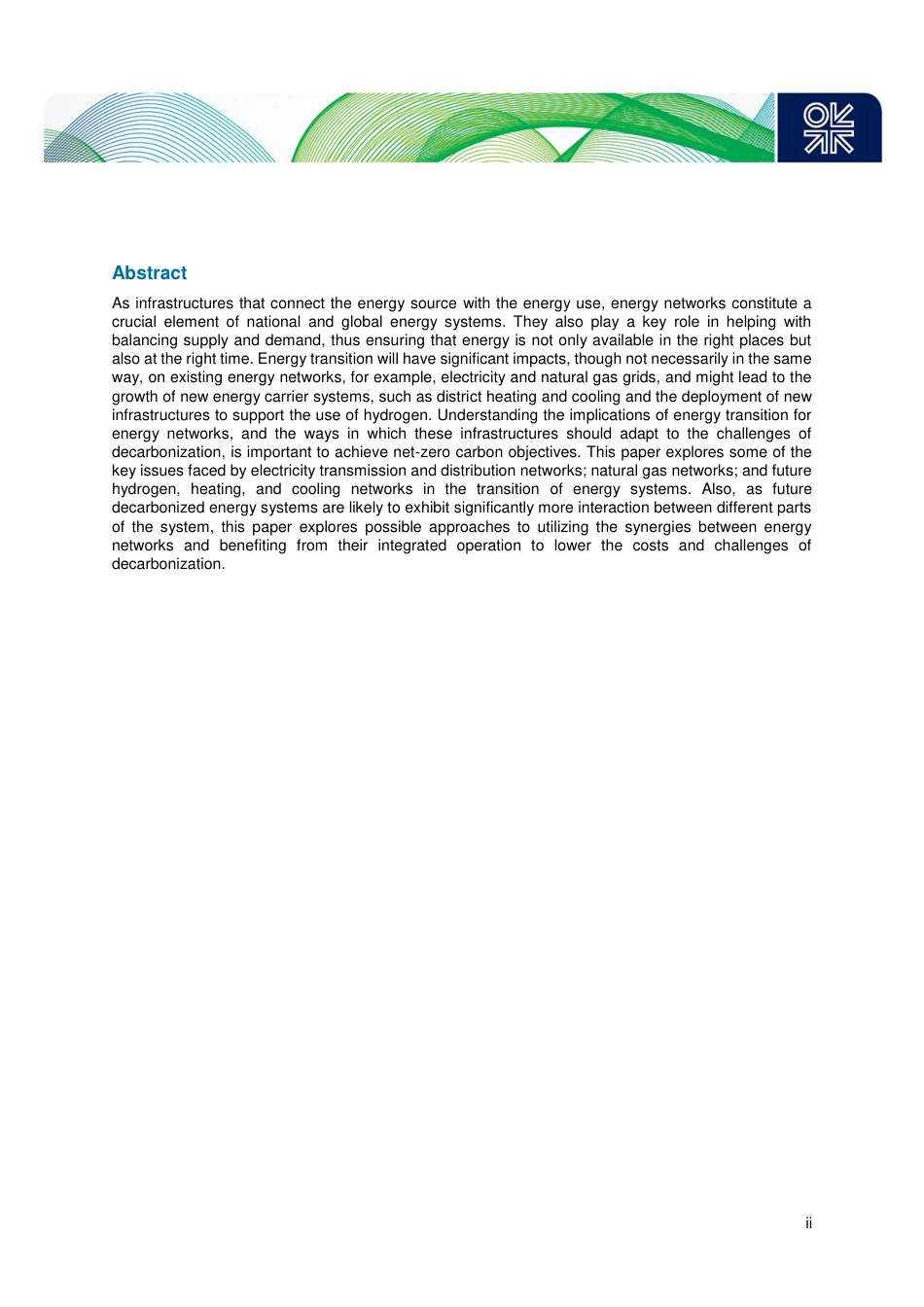May 2022 OIES Paper: EL 48 Energy Networks in the Energy Transition Era Rahmatallah Poudineh, Senior Research Fellow, OIES i The contents of this paper are the author’s sole responsibility. They do not necessarily represent the views of the Oxford Institute for Energy Studies or any of its members. Copyright © 2022 Oxford Institute for Energy Studies (Registered Charity, No. 286084) This publication may be reproduced in part for educational or non-profit purposes without special permission from the copyright holder, provided acknowledgment of the source is made. No use of this publication may be made for resale or for any other commercial purpose whatsoever without prior permission in writing from the Oxford Institute for Energy Studies. ISBN 978-1-78467-199-0 ii Abstract As infrastructures that connect the energy source with the energy use, energy networks constitute a crucial element of national and global energy systems. They also play a key role in helping with balancing supply and demand, thus ensuring that energy is not only available in the right places but also at the right time. Energy transition will have significant impacts, though not necessarily in the same way, on existing energy networks, for example, electricity and natural gas grids, and might lead to the growth of new energy carrier systems, such as district heating and cooling and the deployment of new infrastructures to support the use of hydrogen. Understanding the implications of energy transition for energy networks, and the ways in which these infrastructures should adapt to the challenges of decarbonization, is important to achieve net-zero carbon objectives. This paper explores some of the key issues faced by electricity t...



